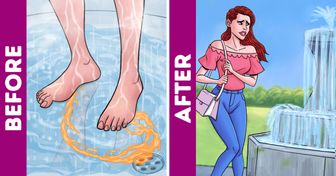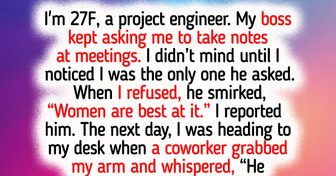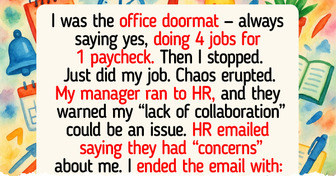20+ Cool Tips People Got From the Internet, Tried by Themselves, and Scored 10/10

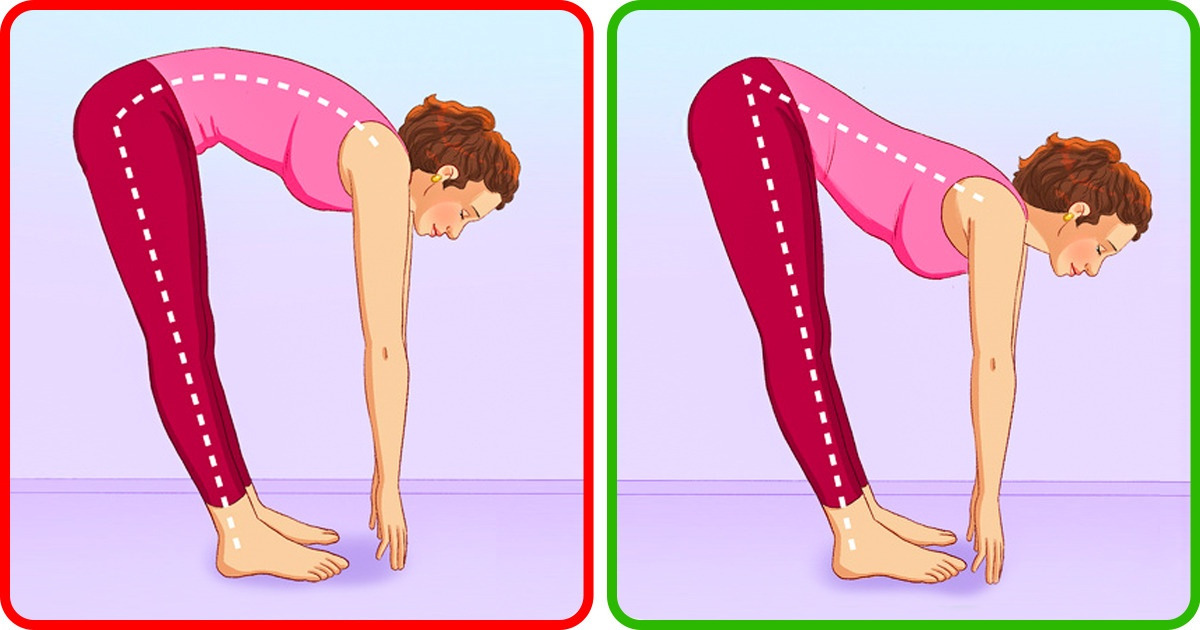
Over the past couple of centuries, work has changed and has gone from a more active and outdoorsy lifestyle to a more sedentary one. We spend long hours sitting in front of our computers and in rooms with artificial lights without realizing the effects that this routine may have on us.
Since at Bright Side we care about your physical health, we’ve prepared a list of exercises you can do from the comfort of your own home.
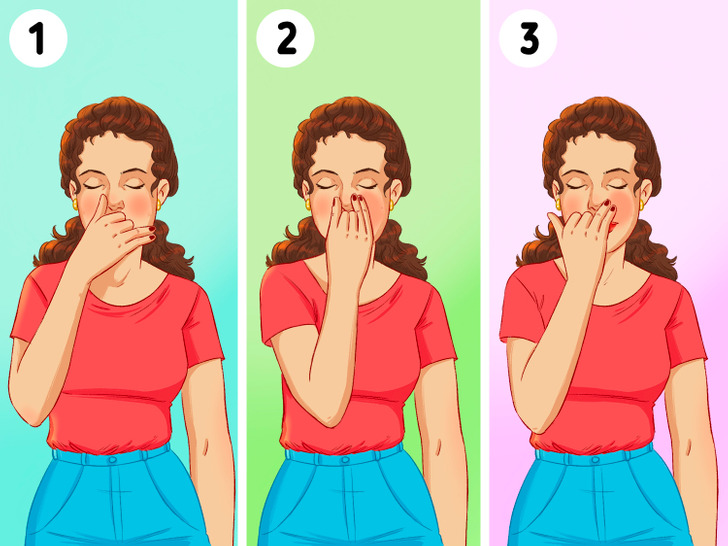
Though not a physical exercise, per sé, the first step to unwind from that long and strenuous day is to practice breathing. Deep abdominal breathing can help our bodies relax by slowing down our heart rate and lowering our blood pressure. Moreover, it can improve our mental well-being since it reduces stress and allows us to stay more focused.
1. Make sure you find a comfortable seat and ground your feet on the floor. Keep your back straight and your shoulders relaxed.
2. Close your eyes and get ready to practice alternate breathing: use your thumb to close the right nostril while you breathe in through the left one.
3. Close the left nostril using your ring finger and briefly hold your breath.
4. Remove the thumb from your right nostril and slowly exhale through this side.
5. Next, inhale through the right nostril, close it with your thumb and then exhale through the left one.
6. Repeat the cycle as many times as needed until you feel more centered and calm.
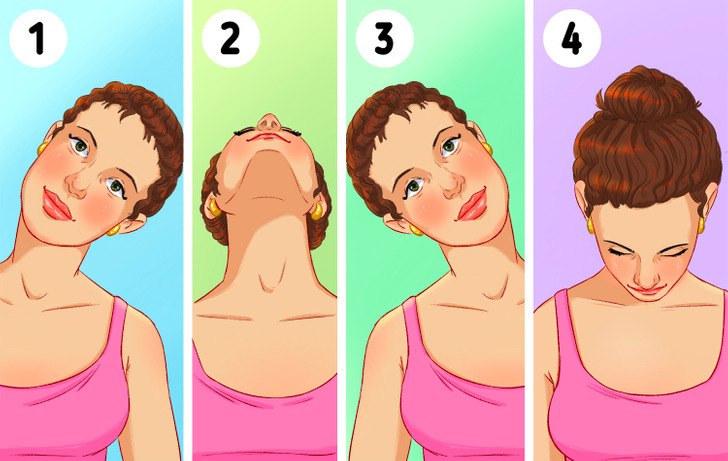
This kind of exercise is great for warming up your neck area and releasing the tension accumulated after slaving away all day in front of your computer. However, If you suffer from any preexisting neck or cervical issues, you should avoid this.
1. From a comfortable seated position with your hands resting on your lap, and gently roll your head to one side.
2. Next, move your neck in a circular motion rolling your head back, then toward the opposite side, and finally to the front.
3. Go back to the initial position and start the movement again but in the opposite direction.
4. Repeat 5 times, alternating the side you start on.
5. Bear in mind that you should increase the width of the rotation of the neck roll gradually and you should stop if you feel pain.
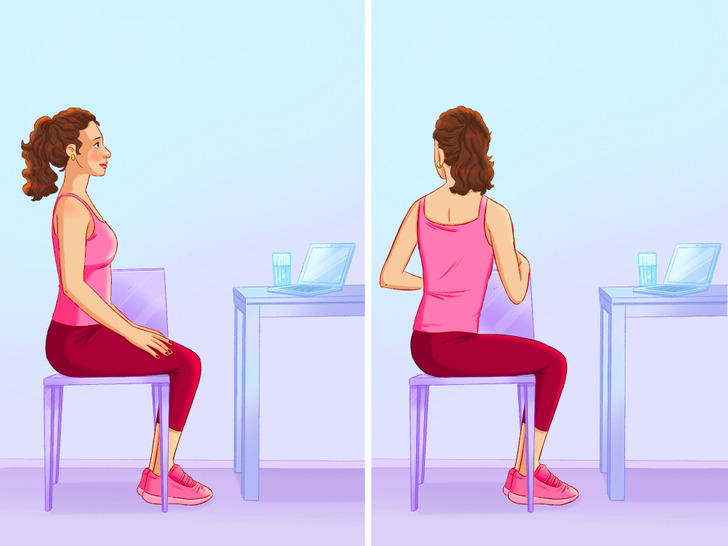
1. Make sure there’s enough room between your body and the desk. Sitting down sideways and with both feet flat on the floor, roll your shoulders back and bring them down.
2. Keep your back straight and twist your spine to one side, until your hands reach the back of the chair. Hold that position for 5 seconds and then return to the starting point.
3. Now, twist your body to the other side.
4. Repeat 2 times on each side. Remember to follow the rhythm of your breath while doing these exercises.
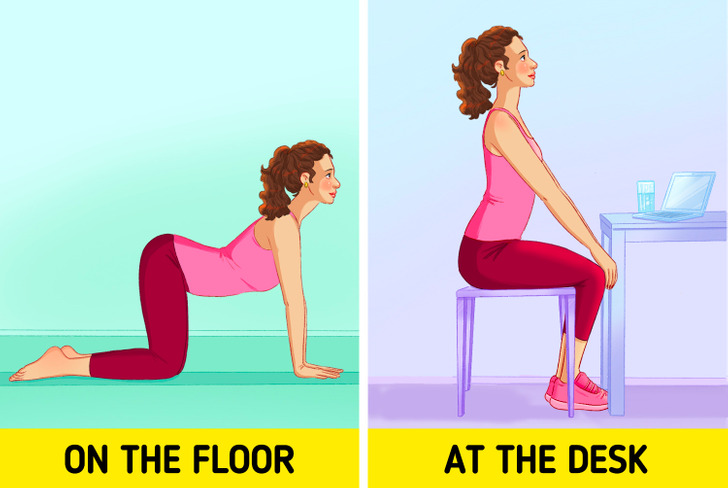
This is quite a simple exercise that can contribute to better posture by strengthening and stretching the muscles from the neck and spine. It also softly massages the abdominal organs and is great for stress relief.
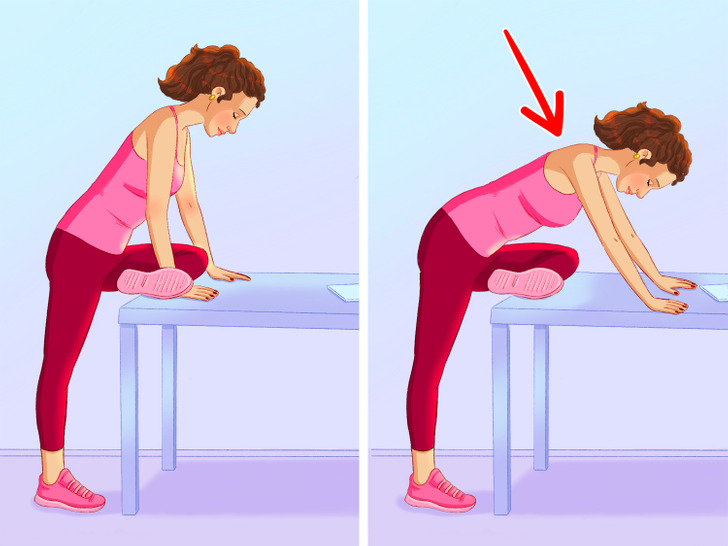
This exercise combines the stretching of your back and hip muscles. Properly aligned and flexible hips help improve your posture, thus improving your overall well-being.
1. Stand in front of your desk with your feet flat on the floor. Clear the desk so that you can use its surface.
2. Bend your left knee and bring your foot up toward the desk, in the form of an inverted L.
3. Bend your upper body forward over the desk.
4. Rest your head on the desk or on your palms.
5. Hold this position for 15 seconds and then repeat with the other leg.
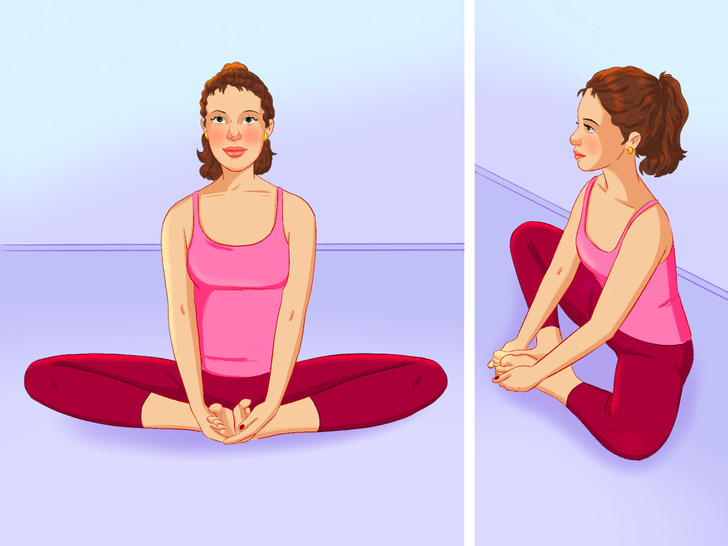
This pose can prove to be effective at decreasing the stiffness in your hip joints after sitting in a chair for long stretches of time.
1. Sit on the floor bending your knees so that the soles of your feet touch each other.
2. Bring your feet as close to your body as possible, making sure that you don’t feel any discomfort.
3. Sit upright without bending your spine and with your hands holding your feet.
4. Remain in this position for 20-30 seconds while softly inhaling and exhaling.
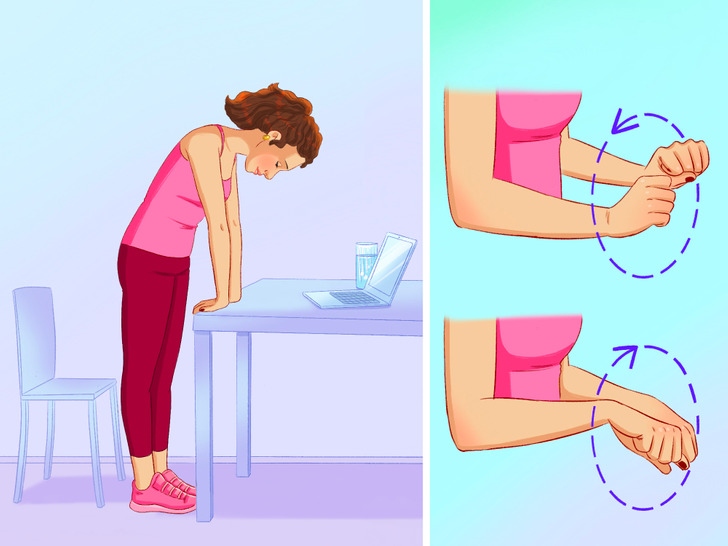
We might not realize it, but many activities we do on a daily basis can contribute to wrist stiffness and pain, this is especially true for office workers. Practicing some simple exercises can give mobility to this area and reduce any discomfort.
1. Stand in front of your desk and clear any objects from its surface.
2. Turn your hands so that you can lay your palms on the desk with your fingers facing your body and on the edge of the desk.
3. Softly press down toward the desk, with your arms stretched. Make sure your shoulders are relaxed.
4. Hold this position for a few seconds and then move your wrists in a circular motion when finished.
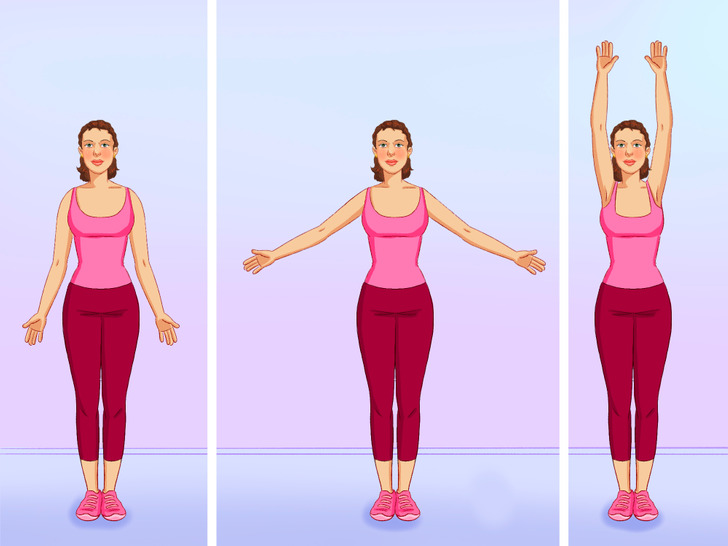
This posture together with the forward fold pose helps to relieve lower back pain and may improve the alignment and overall posture of the body.
1. Stand with your feet hip-width apart and flat on the floor. Your stretched arms rest on the sides of your body.
2. Slowly raise your arms, without bending them, until your fingertips are pointing toward the ceiling.
3. Bend your back moving your torso backward, making sure your head and neck are relaxed and slightly facing up.
4. Stay in this position for a few moments, gently inhaling and exhaling.
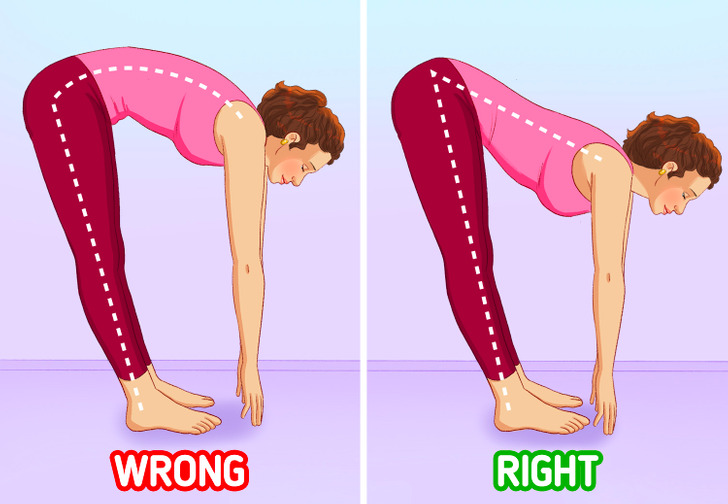
As mentioned before, these 2 poses combined are the most beneficial for those suffering from back pain after spending long hours sitting down.
1. Stand with your legs parallel to each other and your arms resting on the sides of your body.
2. Exhale and bring your torso downward, folding from your hips.
3. Touch the floor with either your fingertips or your palms. If it’s too difficult, try to bend your knees a bit.
4. Hold this pose for a couple of breaths. Make sure your spine is not curved but that it forms an invisible straight line.
5. Go back to the initial position by bending your knees and slowly raising your body. Remember that the last thing you should do is raise your head so that you don’t feel dizzy.
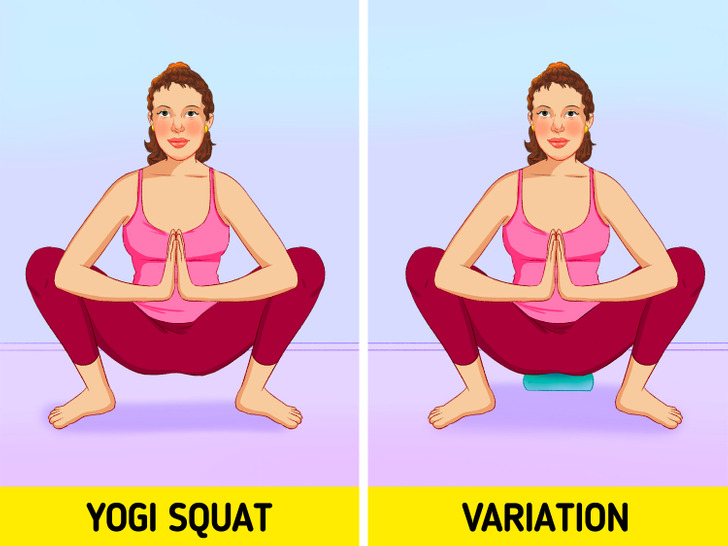
When we sit down for long periods of time, slouching and not being mindful of our posture, we lose flexibility in our hips and back. So to finish off your routine, you can try this pose which can help stretch the inner thighs, open up the pelvis, and decrease any discomfort in your back.
1. Stand with your feet a bit wider apart than your hips.
2. Bend your knees until you get into a squat position.
3. Place your upper arms inside your knees so that the elbows touch the inner part of your knees. Bring your palms together in front of your chest.
4. Keep your spine straight and your head relaxed.
5. Hold this position for 20 seconds, or as long as you can.
6. If needed, you can try to use a pillow for support (variation).
Which exercise was the most useful? Share any exercises with us that you do at home when you’ve been sitting for too long.

